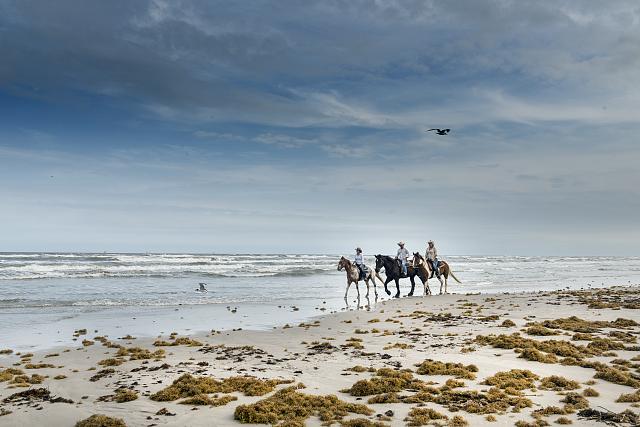Corpus Christi

Corpus Christi, a seaport at the mouth of the Nueces River on the west end of Corpus Christi Bay, is the county seat of Nueces County and the largest city on the South Texas coast. It lies at the junction of Interstate 37 and U. S. highways 77 and 181, 210 miles southwest of Houston. The city's transportation needs are also served by the Texas Mexican, Southern Pacific, and Missouri Pacific railways and Corpus Christi International Airport. In prehistoric times the area was inhabited by various tribes of the Karankawa Indian group, which migrated up and down the Coastal Bend region. It is not known who the first Europeans were to visit the area, but it seems most likely that Alvar Nunez Cabeza de Vaca and his band were the first Europeans who actually set foot on the site. The Spanish, however, largely ignored the region until the 1680s, when Frenchmen under Rene Robert Cavelier, Sieur de La Salle, established a colony in Texas. Spanish authorities dispatched an expedition to the area in 1689 under Alonso De Leon, but the Corpus Christi Bay area remained unknown and unexplored until 1747, when Joaquin de Orobio y Basterra led an expedition down the Nueces River, reaching the bay on February 26. After Orobio's return, Jose de Escandon, governor and captain general of Nuevo Santander, proposed founding a settlement at the mouth of the Nueces called Villa de Vedoya. In the summer of 1749, fifty families accompanied by a squadron of soldiers and two priests set out to colonize the area, but because of prolonged drought and a lack of adequate provisions they gave up before reaching their goal.
In 1787 Manuel de Escandon, son of Jose de Escandon, proposed another settlement at the mouth of the Nueces, but the project never advanced beyond the planning stages. In the late 1780s and early 1790s Spanish authorities considered moving Nuestra Senora del Refugio Mission to the mouth of the Nueces, but abandoned the idea because of continuing friction with the Lipan Apaches. During the 1830s two further failed attempts were made to establish colonies at the mouth of the Nueces. German nobleman Baron Johann von Rachnitzqv tried to found a German settlement there, but the ship carrying the colonists was prevented from landing by the French during the Pastry War. Around the same time, abolitionist Benjamin Lundy proposed the establishment of a colony of former slaves at the site; however, he dropped the plans after the outbreak of the Texas Revolution. The area thus remained uninhabited until September 1839, when Henry Lawrence Kinney and his partner William P. Aubrey established a trading post on the west shore of Corpus Christi Bay, reportedly near what is now the 400 block of North Broadway. Kinney and Aubrey quickly developed a brisk illegal trade with Mexico. In 1841 Capt. Enrique Villarreal, a rancher from Matamoros who had been granted the land by the Mexican government, led a force of 300 men to reclaim his property and seize the arms stored at Kinney's stockade. Kinney, who at the time reportedly had only eight men under his command, however, managed to negotiate an agreement to purchase the land. Kinney and Aubrey's post soon became the focus of trade in the area. Attacks by Mexican bands forced the abandonment of the post in 1842, but Kinney returned a short time later and reestablished his business. A post office opened the same year with Aubrey as postmaster. By the mid-1840s the settlement now known as Corpus Christi ("the Body of Christ") was a small village. An English visitor described it as consisting of "Colonel Kinney's fortified house, about a half dozen stores, and a grog shop or two"; another visitor around the same time reported that the village had some fifty families. In 1846 the town became county seat the of newly formed Nueces County. It was incorporated on April 25, 1846, but because no public officials were elected, the corporation was repealed, and the town was not reincorporated until February 16, 1852.
